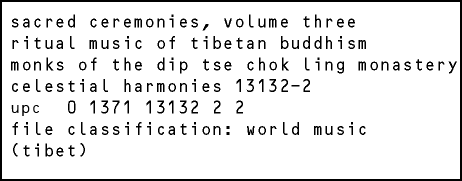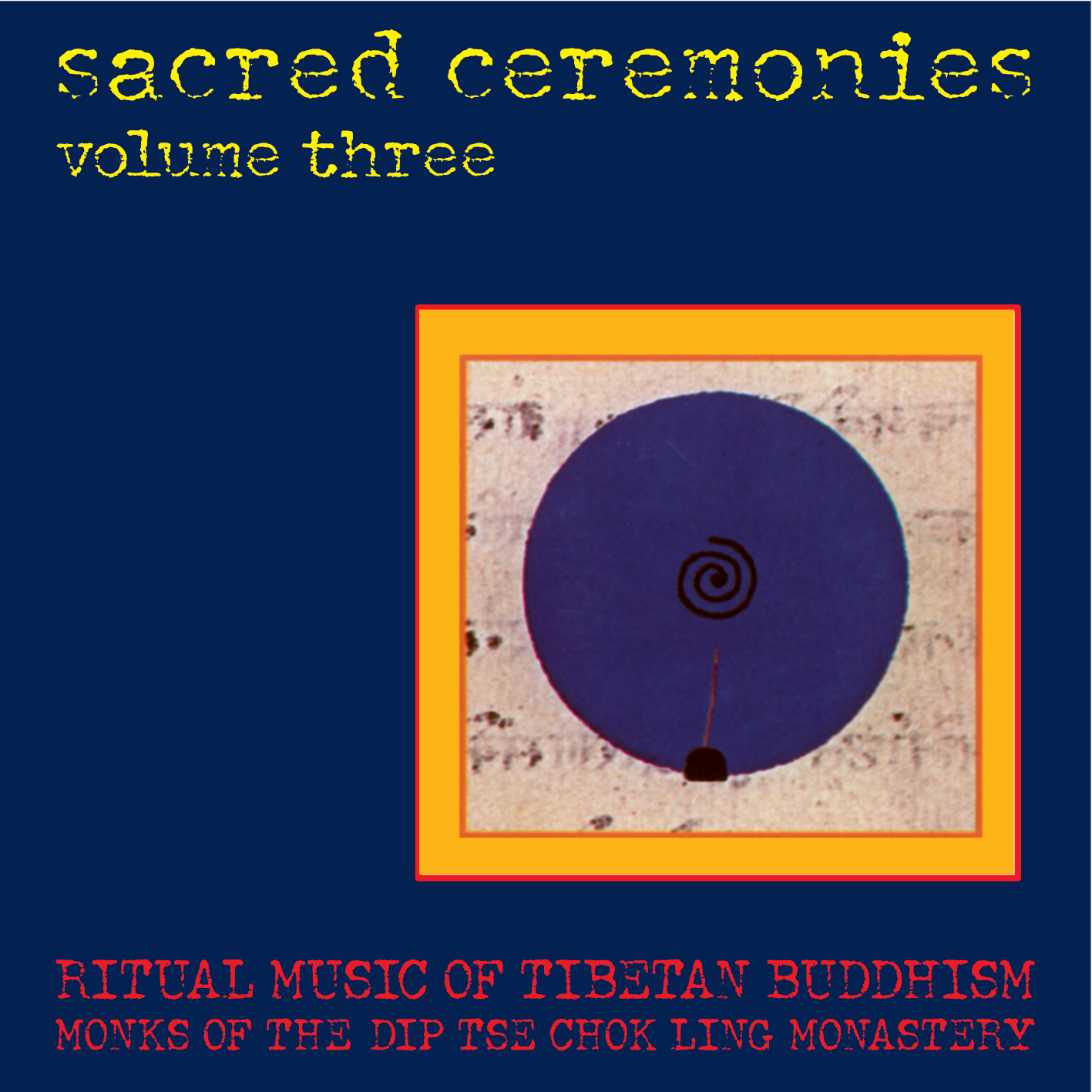 |
|||||||||||||||
 
Im 7. und 8. Jahrhundert gelangte der Buddhismus von Indien nach Tibet und vermischte sich dort mit der schamanischen Bön-Tradition. Sie ist bis heute lebendig: In den Maskentänzen, in magischen Ritualen oder wenn der Dalai Lama ein in Trance versetztes Orakel befragt. Während die Volksmusik immer wieder aus dem benachbarten China inspiriert wurde, ist die zeremonielle Musik der Mönche über die Jahrhunderte bis in unsere Zeit unverändert und eigenständig geblieben. Die Texte der mantrischen Gesänge sind meist Übersetzungen aus dem Sanskrit, die Art des Vortrags und die Instrumente dagegen unverkennbar tibetisch. Nach der chinesische Besetzung Tibets flohen mit dem Dalai Lama viele Lamas (tibetisch für guru, spiritueller Lehrer) zunächst nach Dharamsala, Nordindien und machten bald darauf den tibetischen Buddhismus (inklusive der einzigartigen Musik) in Europa und in den USA bekannt. Filme wie Little Buddha, Sieben Jahre in Tibet oder Kundun folgten - nicht zuletzt dank des unermüdlichen Einsatzes und der Popularität des Dalai Lama. Als Ergänzung zu den folgenden Aufnahmen, die Produzent David Parsons im Dip Tse Chok Ling Kloster in Dharamsala machte, seien seine eigenen Ambient-CDs Himalaya, Tibetan Plateau, Yatra, Dorje Ling und Parikrama empfohlen. Die Mönche widmen diese Aufnahme dem 14. Dalai Lama zu seinem 60. Geburtstag und ihrem Lama Tashi Gyaltsen, der das Kloster leitet. Gesungene Gebete mit den rituellen Musikinstrumenten. Die Essenz des tibetischen Buddhismus. Ästhetisches Begleitheft mit Farbfotos. the projectThe Sacred Ceremonies series began in 1989,
by recording artist David Parsons,
when he traveled to Dharamsala, India to experience the mystical sounds
of Tibetan ritual music. He was received by the Dip
Tse Chok Ling Monastery School and given permission to incorporate
his DAT recordings of their rituals into his 1990 album of original
music, Yatra (18072). In return for
the monks' kindness, Parsons decided to release selected Dip Tse Chok
Ling ceremonial performances in their original state. The results
were first released in 1990 on Sacred Ceremonies: Ritual Music
of Tibetan Buddhism (17074).
When Parsons returned to Dharamsala in 1990 as part of a documentary film crew, he found that the Dip Tse Chok Ling monks had been practicing for another album. He was amazed at the difference between the two recording sessions. "The first time, they didn't understand why anyone would want to listen to what they did," Parsons recalls. "I also had to explain a lot about the recording techniques, and we had to keep rearranging the instruments to get a nice stereo image. It took three months to get the right recording. This time, the monks didn't need to be told anything. They set up completely by themselves. I just went down there, turned on the DAT and recorded Sacred Ceremonies 2 (17079) in a couple of hours." And so, this new tradition of recording the ancient ceremonial sounds of Tibetan Buddhism continues. In their third album, Sacred Ceremonies 3, the monks of Dip Tse Chok Ling selected prayers to honor the memory of Lama Tashi Gyaltsen, founder of the present day monastery, and the Dalai Lama, in celebration of his 60th birthday. They also honor and dedicate this volume to all Tibetan people. the artistsThe Dip Tse Chok Ling Monastery was founded in 18th
century Tibet by the Venerable Yongzin Yeshi Gyaltsen, tutor to the
eighth Dalai Lama. The lineage of the monastery continued until 1959,
when Tibet suffered the devastating Lhasa uprising. Together with
over 3,000 other practicing monasteries, Dip Tse Chok Ling was razed
to the ground. Fortunately, its inmates managed to salvage many religious
artifacts and documents, and escape with them to Nepal. In 1976, the
Dip Tse Chok Ling Monastery was reestablished in Dharamsala, India,
by Lama Tashi, and construction began in 1984 on the present day monastery.
Lama Tashi lived the remainder of his life there, rebuilding and reestablishing
the old way of life. Since his passing in 1992, a stupa (memorial)
has been built next to the temple. Today, the monastery continues
to house numerous monks and students.
Producer David Parsons has explored and field recorded in many remote and war–torn areas of the globe, producing traditional and lost arts music. These series include the critically acclaimed The Music of Vietnam (19903), voted one of the top ten albums for 1995 by The New York Times,The Music of Cambodia (19902), The Music of Armenia (19909) and The Music of Islam (19907) tracklist
|
|||||||||||||||
|
|
|||||||||||||||
 |


